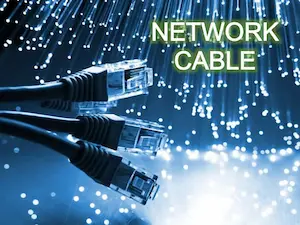Learn things you shouldn’t Do when Running Network Cable.
Posted By Remote Techs On 29-August-2023

As we wrap up our journey through the pitfalls of running network cables, remember that a well-executed installation is the foundation of a robust network.
By avoiding these common mistakes neglecting planning, underestimating lengths, disregarding obstacles, ignoring labeling, skipping testing, mixing cable types, and overlooking cable management you can ensure a smooth digital experience for your business.
In this article, I’ll walk you through what NOT to do when running network cables, drawing from our collective expertise at Remote Techs.
1. Neglecting Proper Planning
Diving into the installation process is tempting, but a lack of planning can lead to chaos. Before you even think about unspooling a single cable, take the time to design a well-thought-out network layout. Identify the best routes for your lines, considering distance, interference, and potential hazards. A clear plan prevents the need for last-minute adjustments that can cause unnecessary downtime.
Ah, the classic blunder: cutting cables too short. One can quickly become overly optimistic about the distance between devices, only to realize they’re left with a line that only sometimes reaches. Always give yourself some slack—literally. Leave a few extra feet of cable at both ends to accommodate unforeseen changes in the setup. At Remote Techs, we’ve learned that a little different thread now can save you from frustration later.
3. Disregarding Cable Path Obstacles
When running network cables, it’s crucial to be mindful of potential obstacles. Cables snaking across high-traffic areas or near heavy machinery are accidents waiting to happen. Avoid running cables near sources of interference, such as power lines or fluorescent lights.
4. Ignoring Cable Labeling
Contact Remote Techs For IT Support Los Angeles Today
We provide comprehensive, tailored solutions ensuring smooth and secure operations. Trust our expertise to empower your business for growth and resilience.
Contact UsIn the excitement of installation, cable labeling might seem tedious. But trust me, and it’s a step you won’t regret. Properly labeling each cable at both ends can save you countless hours of troubleshooting in the future. At Remote Techs, we make it a rule to mark each line with relevant information, like the device it’s connected to, the network it belongs to, and its purpose. This small investment of time pays off handsomely in the long run.
5. Skipping Cable Testing
Picture this: The cables are neatly in place, The devices are connected, and anticipation is high. And then, something needs to be fixed. Don’t let this nightmare become a reality. Always, always test your cables and connections before declaring the job complete. Use cable testers to ensure each line is terminated correctly and transmitting data as expected. This step eliminates the headache of finding out about faulty connections when you’re already knee-deep in other tasks.
6. Mixing Cable Types Haphazardly
Different network cables serve other purposes. Ethernet, fiber optic, coaxial—the list goes on. It’s important not to mix and match cable types haphazardly. Each cable has its own specifications and best use cases. We meticulously select the correct cable type for each scenario at Remote Techs to ensure optimal performance and future scalability.
7. Overlooking Cable Management
A nest of tangled cables needs to be more professional and can lead to overheating and signal interference. Proper cable management not only improves the aesthetics of your setup but also enhances network reliability. Use cable clips, organizers, and conduits to keep cables tidy and separated. This attention to detail reflects positively on your overall network infrastructure.
At Remote Techs, we’ve encountered these challenges firsthand, learning from our experiences to provide you with the expertise needed to conquer them. Here’s to building networks that stand the test of time!